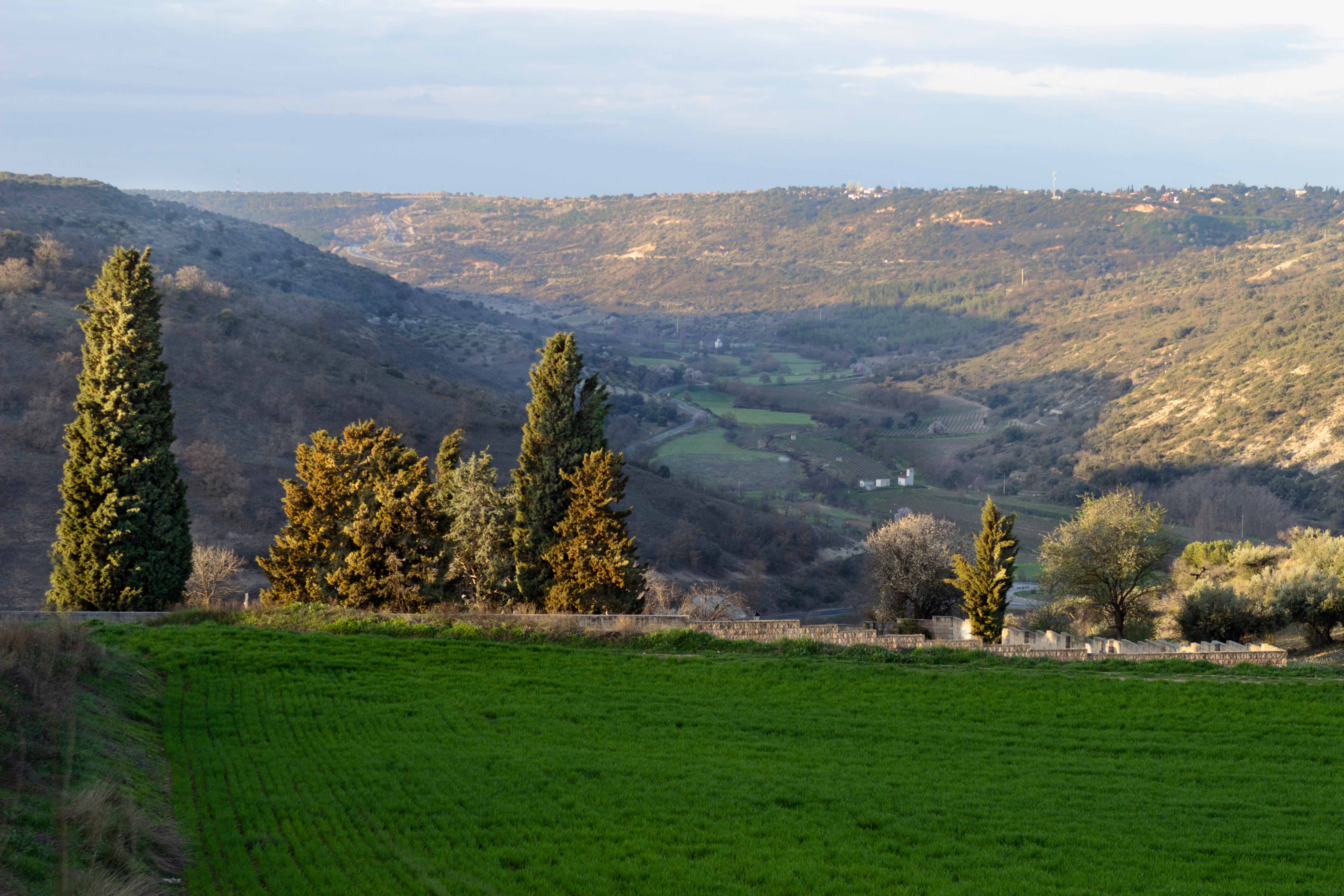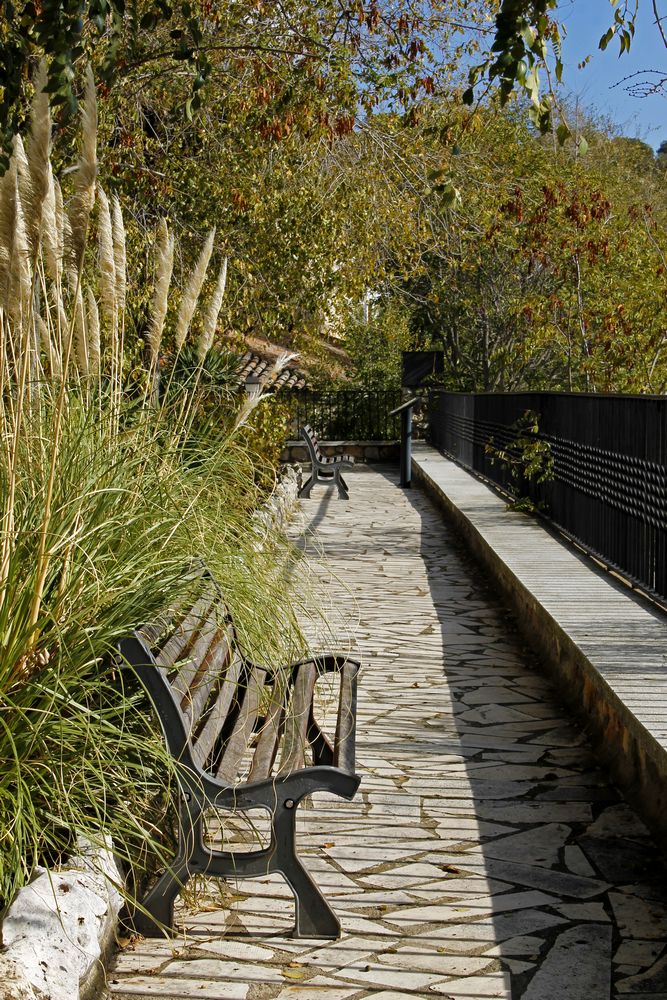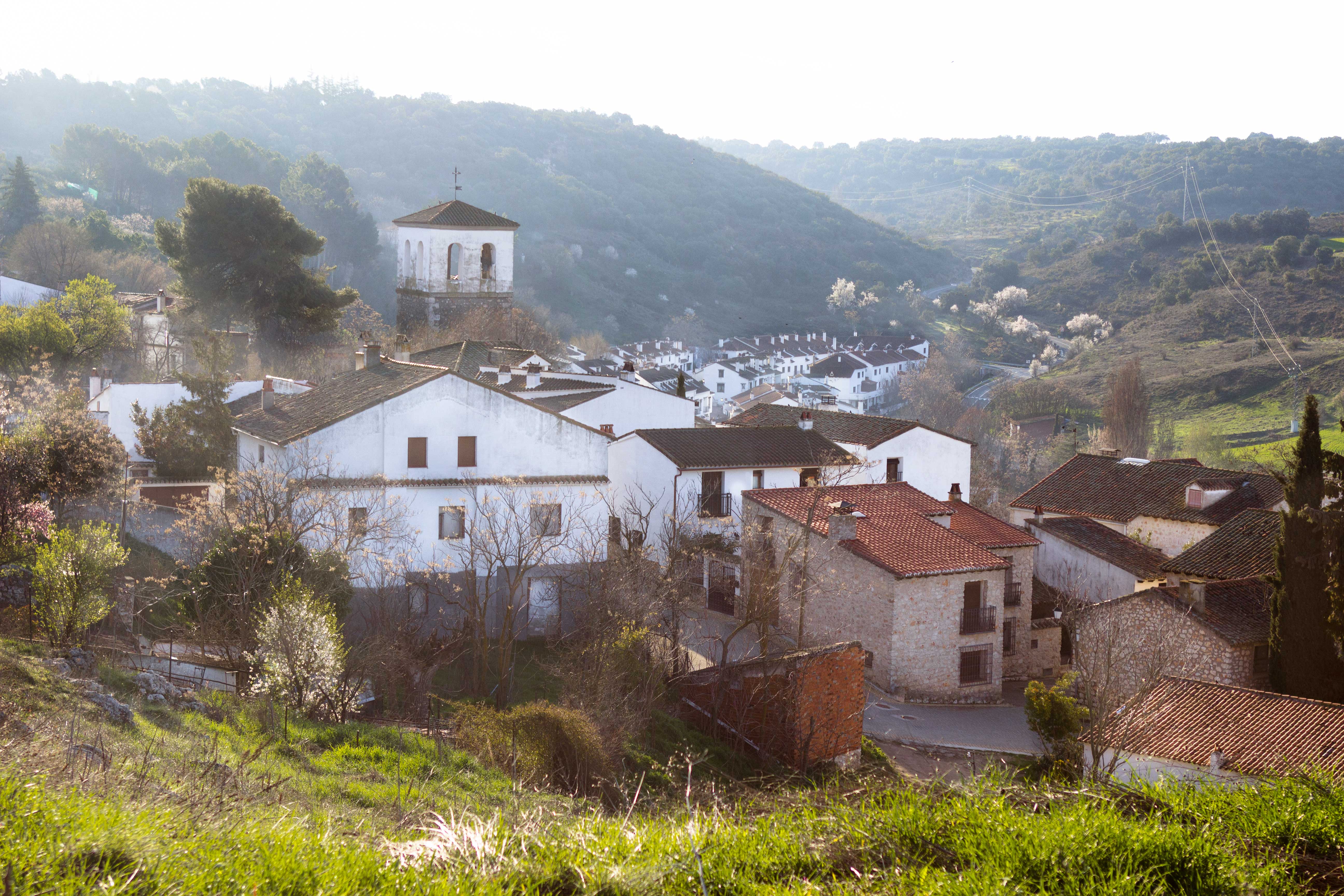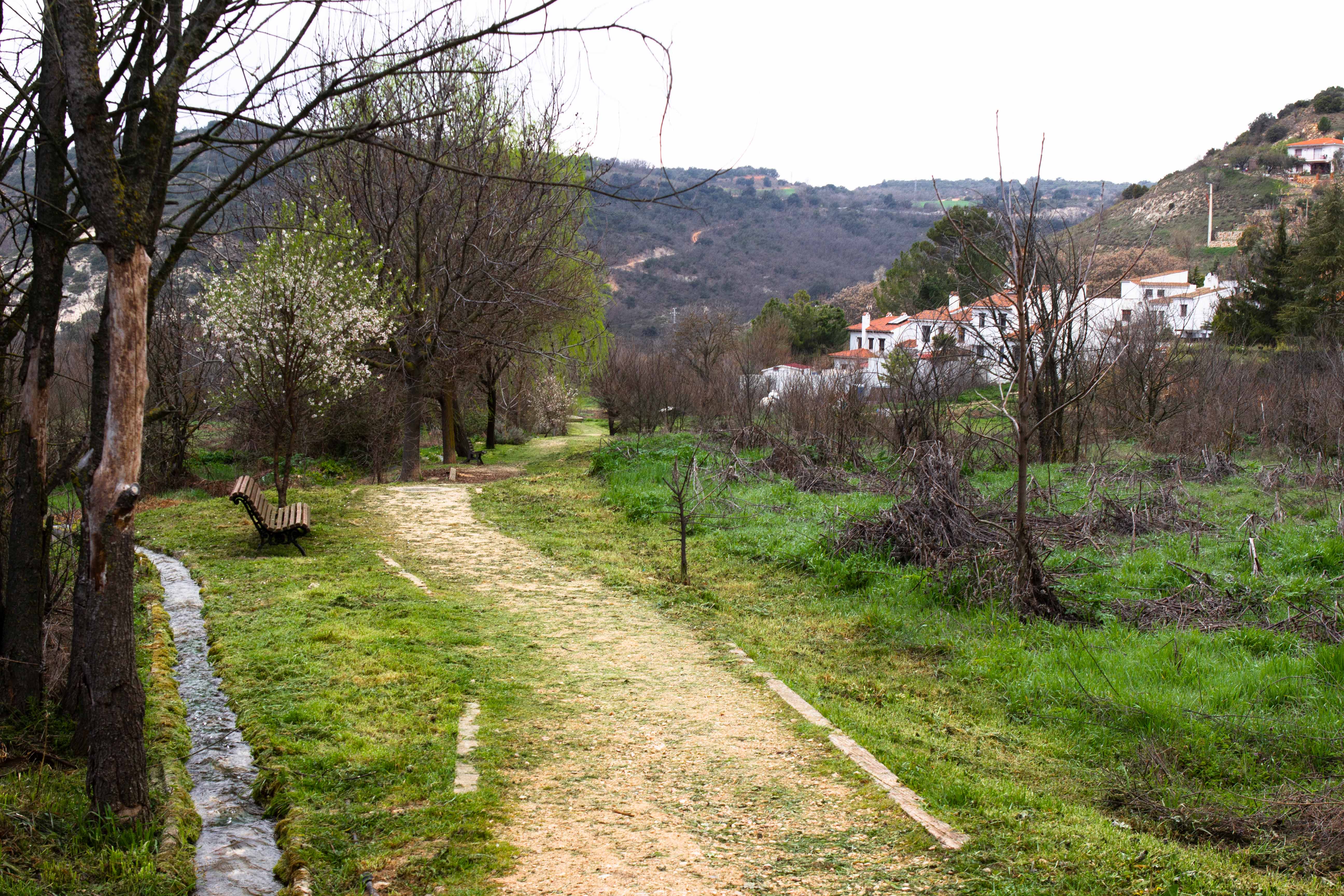History of Olmeda
 Before starting to talk about the history of Olmeda, we must clarify the difficulty in carrying out these works due to the lack of documents in the Municipal Archive prior to the mid-19th century. The first written references that we have, relative to our town, are from the Middle Ages, 12th and 13th centuries and always in relation to Alcalá de Henares. To speak of earlier times we must turn to archeology. We have references to construction, ceramic and lithic industry remains, very close to the current location of the town, from the Bronze Age (1,700 BC). This town would be formed by a main nucleus, probably fortified and associated with this nucleus several defensive nuclei and control of the territory, as well as several "farms" for agricultural and livestock production.
Before starting to talk about the history of Olmeda, we must clarify the difficulty in carrying out these works due to the lack of documents in the Municipal Archive prior to the mid-19th century. The first written references that we have, relative to our town, are from the Middle Ages, 12th and 13th centuries and always in relation to Alcalá de Henares. To speak of earlier times we must turn to archeology. We have references to construction, ceramic and lithic industry remains, very close to the current location of the town, from the Bronze Age (1,700 BC). This town would be formed by a main nucleus, probably fortified and associated with this nucleus several defensive nuclei and control of the territory, as well as several "farms" for agricultural and livestock production.
Between the 11th and 13th centuries this territory was repopulated, which ended up forming the community of town and land of Alcalá. The land of Alcalá or its alfoz (group of towns that belong to another principal and that have the same arrangement) was made up of 30 villages, of which 25 will become towns and 5 ended up depopulated. La Olmeda was one of these villages that ended up being a town.
Olmeda in the land of Alcalá
The map of the land of Alcalá from 1495 shows the 25 villages, because the other 5 villages had already been depopulated. Of these 25 villas, 4 are located in the countryside and the rest in the alcarria. La Olmeda doubled its municipal term with the incorporation of the depopulated area of Valmores.
On August 22, 1564, La Olmeda obtained by royal privilege its status as an independent town of the Alcala jurisdiction. From this moment on, they have the power to appoint justices and act with autonomy in any matter related to their administration and government.
The manor was passed through several hands until at the beginning of the 18th century Juan de Goyeneche acquired the manor of La Olmeda
The relevant transformation of the municipality of La Olmeda began around 1709, with the construction by José Benito de Churriguera of a palace, which he would call Nuevo Baztán, evoking its Navarrese origins. A new urban complex, located in the "Monte Acevedo" or "Acevedo Forest" that was completed in 1713. And that would become independent from La Olmeda at the end of the 18th century.
From 1714 José Benito de Churriguera became the lord of La Olmeda, and started an industrial complex around the palace with a program for the reindustrialization and repopulation of the region. For this he follows the theories of the Minister of Finance of the Sun King Jean Baptiste Colbert.
La Olmeda in the southeast room
 This vast and complex network of the land of Alcalá required an organization and management that allowed Alcalá to control the territories that were under its jurisdiction. Two methodologies were used for this.
This vast and complex network of the land of Alcalá required an organization and management that allowed Alcalá to control the territories that were under its jurisdiction. Two methodologies were used for this.
One of them is through the arrangement in rooms, where we know that five groups of villages were established, called rooms. La Olmeda is located in the southeast quarter that, in 1495, it was made up: Pezuela, La Olmeda, El Villar, Corpa and Orusco, although this composition varies and, in 1530, Carabaña is incorporated. Said organization requires the appointment of a Procurator General del Común and a notary, Diego de Ocaña, a neighbor of Olmeda, held this position between 1590 and 1592. In addition, each room has a representative called “sacado” or “sexmero”.
The title or condition of head of quarter or administrative center does not carry any rank or capitality with respect to the other villages. Thus, in 1530 Pezuela was the fourth head, in 1573 La Olmeda and, later, it would be Carabaña. The choice may take into account the place of origin or neighborhood of the room officer.
The other means of control that the town of Alcalá has over the villages of its alfoz is through legislation, that is, the jurisdiction.
This legal structure began with the Old Charter of Archbishop Raimundo in 1135, then Rodrigo Jiménez de Rada in 1223 granted new charters to the villages. The interest in the fueros as a basic rule regulating the life of Alcalá and his land is still present in the other archbishops who succeeded him, but it will be with Francisco Jiménez de Cisneros when the in-depth regeneration of Complutense Local Law is undertaken. In 1509 the "Ordinances and Jurisdiction" were published with a more structured and more rational approach than the previous ones. These ordinances regulate the life of the Villa and the villages in a very detailed way.
In the 15th and 16th centuries the ordinances proliferated in the different villages. In the case of La Olmeda we have no references that there were any, due to the lack of documentation in the Municipal Archive of La Olmeda prior to the 19th century. In La Olmeda we do not have local ordinances, although we do have the ordinance that occurs in the Common of the land of Alcalá, regulations that logically affect the life of La Olmeda. For example, in October 1496 it is regulated that the residents of the villages are not summoned before the mayor of Alcalá for the payment of the alcabalas, but that these rents are paid before the judges and mayors of the respective villages.
This normative process is a struggle between the town and the villages and will allow the villages to gradually acquire greater levels of autonomy. Process that culminates in the course of the sixteenth century, with the independence of the villages, which will become towns.
The Villa of Olmeda
 It will be with Felipe II when independence and the granting of town titles will arrive. Felipe II justified the exemptions of the places by the need to defray the expenses caused by the wars of the Emperor with the King of France and his allies, the conflicts in 1563 with the Turks and Moors, etc ... and that all the real income.
It will be with Felipe II when independence and the granting of town titles will arrive. Felipe II justified the exemptions of the places by the need to defray the expenses caused by the wars of the Emperor with the King of France and his allies, the conflicts in 1563 with the Turks and Moors, etc ... and that all the real income.
By granting them the town title, he forced them to contribute a substantial amount of money. In addition, each change of ownership of the jurisdictions was accompanied by a tax imposition that swelled the royal treasury, hence the interest that the crown had in the proliferation of property changes.
La Olmeda is no exception in this process, and once acquired the condition of town it will pass through the hands of different gentlemen.
On May 1, 1564, Don Gómez Tello Girón, Governor and General Administrator of the Archbishopric of Toledo, addressed the King to request La Olmeda exemption from the jurisdiction of the town of Alcalá.
On August 22, 1564, La Olmeda obtained by royal privilege its status as an independent town of the Alcala jurisdiction. From this moment on, they have the power to appoint justices and act with autonomy in any matter related to their administration and government. This privilege cost the neighbors 892,500 maravedíes (7,500 for each neighbor of the town).
The division of the two figures provides us with information on the population of La Olmeda, 119 neighbors. If we suppose that only the pecheros are responsible for paying, we would have to add the children who were normally exempt from paying. The number of families of this social condition, according to figure in the reports of Felipe II in 1576, is six; therefore, in 1564, the neighborhood was about 125 neighbors. More than 400 inhabitants, currently the population of Olmeda is around 370 inhabitants.
First buyer
 After this independence it was followed by the acquisition by Baltasar Lomelín, of the jurisdiction, lordship and vassalage of La Olmeda in 1576, in exchange for 2,385,090 maravedíes, paid to Juan Fernández Espinosa, treasurer of the King and member of his Finance Council.
After this independence it was followed by the acquisition by Baltasar Lomelín, of the jurisdiction, lordship and vassalage of La Olmeda in 1576, in exchange for 2,385,090 maravedíes, paid to Juan Fernández Espinosa, treasurer of the King and member of his Finance Council.
According to A. Domínguez Ortiz, Baltasar Lomelín was a Genoese-born novice who engaged in speculation by acquiring and selling villas. In 1577 he bought the Galician town of Noya and quickly sold it to the Count of Lemos2. Following this line, Lomelín transferred La Olmeda in 1582 to Alonso Núñez de Bohórquez, an operation that was canceled in 1584 when the neighbors exercised the right of first refusal. The lawsuit was resolved in favor of the neighbors, and the purchase was made for 1,743,750 maravedíes, as recorded in the deed of March 2, 1584 made before the notary Pedro Velasco.
The Independence of Nuevo Baztán
Eusebio Bartolomé considers that independence is not only ecclesiastical but civil, but the truth is that in the Ensenada Cadastre of 1752 in the headline referring to La Olmeda it says “The town of Olmeda de la Onion and its village of Nuevo Baztán”. Later in the interrogation of Lorenzana in 1782, while Manuel Barrado was priest, he said "to the west the place of Nuevo Baztán the jurisdiction although temporally it is the same with the village in the spiritual it is different."
In 1786 in the Floridablanca census, Manuel Sánchez Dávila already appears as mayor. This suggests that in 1723 ecclesiastical independence was achieved but not civil, which would arrive at the end of the century, between 1782 and 1786.
Singular events that marked the history of Olmeda1 Provisión arzobispal para que los vecinos del Común no sean emplazados ni citados, por el pago de alcabalas, ante el vicario ni ante el corregidor de Alcalá, sino sólo ante los jueces y alcaldes de sus respectivas aldeas A.C.T.A. nº 5; s\1, 1 de octubre de 1496).Es una confirmación del Cardenal Cisneros sobre otra carta del arzobispo Pedro González de Mendoza, que lo es a la vez, de otra del arzobispo Carrillo del 7 de marzo de 1471. Sacado de M. Mayoral, 2005, op. cit.
2 Domínguez Ortiz, A. “Ventas y exenciones de lugares durante el reinado de Felipe IV”, en Instituciones y sociedad en la España de los Austrias, Madrid, 1985, p. 63.
 EN
EN Español
Español




